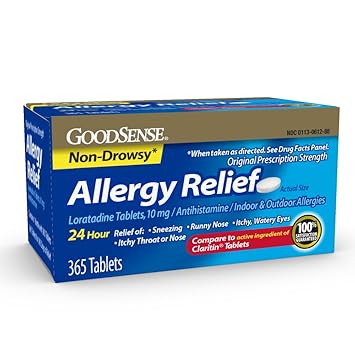What is Spring Allergy & How is it Treated?
What is Pollen?
Pollen is small particles that are released into the air for fertilization of plants of the same type and dispersed around by wind. These particles are of different sizes and different weights. The most important types of pollen are produced by alder, hazelnut and birch. It is also wormwood, grass species and orchard.
What is Spring Allergy?
Allergy type, commonly known as spring allergy, is actually pollen allergy. Pollen allergy occurs in the spring. For this reason, it is called spring allergy. Pollen allergy is caused by an individual's allergic reaction to proteins present in certain types of pollen. Pollen allergy has different names.
In medicine, allergic rhinitis is called hay fever in folk language. The pollens settle in the respiratory tract of people by breath. Apart from the respiratory tract, pollen is also found in the hair, skin and eyes. Some types of pollen do not cause problems. Some types of pollen cause very different problems in the person. It causes the immune system to act in people with allergies. Inflammation of the nose or eyes occurs when the immune system is activated. The body reacts to proteins in the pollen, causing discomfort. Pollen allergy is a common condition. This allergy occurs in people aged 4 to 40 years. In recent years, there has been an increase in the number of people suffering from this disease.
How does spring (pollen) allergy occur?
In people with allergic susceptibility, airborne pollen settles in the nose by inhalation. This causes seasonal complaints. When the body encounters proteins in the pollen, it produces a biochemical weapon, causing allergic symptoms and diseases. The person's complaints show an increase or decrease depending on the amount of pollen in the air.
Symptoms of Spring (Pollen) Allergy
Spring allergy occurs with different symptoms. The body reacts to proteins in pollen. As a result, discomforts occur. People with pollen allergy have different symptoms. Usually these symptoms are experienced continuously. Some problems occur in the nose, eye, ear, palate and respiratory tract. Nasal congestion, runny nose and nasal itching are experienced. Itching occurs in the ear and itching in the palate. There is a periodic bleeding in the nose. Itching of the eyes, watery eyes, redness in the eyes occurs. The person often has a cough.
Respiratory problems occur. Shortness of breath occurs in the person. In some cases, the common colds are symptoms of pollen allergy. Especially in people fatigue, fatigue is seen. Concentration problem is also frequently experienced in people. These symptoms are common symptoms of pollen allergy.
Nasal congestion
Runny nose
Itchy nose
Itching in the ear
Itching on the palate
Nose bleeding
Itchy eye
Eye watering
Cough
Shortness of breath
Cold
Weakness
Tiredness
Concentrate problem
Ways to Prevent Spring (Pollen) Allergy
Care should be taken against other allergens.
Avoid heavy odors, cigarettes and tobacco smoke.
Attention should be paid to cleanliness.
The windows should not be opened and the house should not be ventilated during pollen intensive hours.
Laundry should not be dried out in the middle of the day.
Hair should be washed before bedtime.
Physical activities should be performed when the pollen is not intense.
Dust mask should be used if there is a pollen density when going out.
Sunglasses should be worn.
Spring (Pollen) Allergy Treatment
People with pollen allergy symptoms should first consult a doctor. Diagnosis is made after medical examination and necessary tests. Then the necessary treatments should be applied. In addition to treatments, people should consider ways to protect against pollen. People with pollen allergy should avoid factors that they cannot tolerate. Drug treatment is usually done in this condition. Nasal medicines, eye drops, allergy pills, needles, and auxiliary drugs for opening the airway are used in the treatment of drugs. These drugs aim to minimize the sensitivity seen in people.
In addition to drug treatment, vaccines are administered. It is made insensitive to allergen by vaccination application. This treatment lasts 3 to 4 years, but 100% treatment is not possible in allergic patients. Therefore, people should be kept under control.
7AXX
Basic Care Allergy Relief Diphenhydramine Hcl Tablets, 400Count







